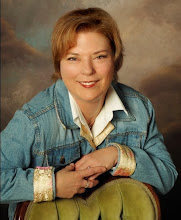“The statistics on bullying and suicide are alarming:
- Suicide is the third leading cause of death among young people, resulting in about 4,400 deaths per year, according to the CDC. For every suicide among young people, there are at least 100 suicide attempts. Over 14 percent of high school students have considered suicide, and almost 7 percent have attempted it.
- Bully victims are between 2 to 9 times more likely to consider suicide than non-victims, according to studies by Yale University
- A study in Britain found that at least half of suicides among young people are related to bullying
- 10 to 14 year old girls may be at even higher risk for suicide, according to the study above
- According to statistics reported by ABC News, nearly 30 percent of students are either bullies or victims of bullying, and 160,000 kids stay home from school every day because of fear of bullying
In recent national news here in the U.S., 12-year old Rebecca Sedwick and 15-year old Jordon Lewis committed suicide because of cyberbullying; there were nine cases reported last year internationally. So, what is the good news?
As reported by newstips@katu.com, one hundred non-acquaintances and one loving aunt came to have lunch with student Halsey Parkerson at South Salem High School in Salem, Oregon. Their goal? Show their support for him against the young man who had bullied him. Halsey’s aunt had sent out an SOS to one of her car clubs on Facebook and people came from far away as Vancouver, British Columbia in Canada. Once he understood the reason for the traffic jam and commotion, the school’s principal allowed the visitors to stay. In the end, the young man who bullied Halsey manned up and apologized. Halsey, to quote from the article, stated: “It’s just unbelievable…I now know that whenever I am bullied I’ll raise my head up and say ‘Sorry, I have too many friends to think I’m being bullied……If you are being bullied, stand up and express yourself.”
This is the best example of family and community support that ever could be illustrated in actuality. Every single person who came that day to be present for Halsey made a positive, humanitarian statement and impact for change. Each individual cared enough to take the time, spend the money and put forth the effort to be there for one person, and ultimately for everyone who is bullied.
I read some disparaging comments on the article including “it was staged with actors” and “too facile in its resolution.” Well, if that is true, I would like to know who scripted that brilliant scenario? Who paid for it? Certainly one more hero on my list.
So many right things happened at this rally. One concerned aunt made a huge difference in the life of her nephew being bullied at school. Halsey literally stood up straighter when he knew he was supported by family, friends and community. The principal “let it happen”, dispelling a potential power struggle. And we, as individuals and as a group, saw another example of how we can make a difference. A simple courageous act effected changes. I wish I knew all the names of those involved so that I could acknowledge the individuals: Halsey’s aunt, the young-man-who no-longer-will-be-a-bully, the principal, and every single person who cared so much to rally for Halsey.
I hope there is a constellation where every hero has a star. One hundred and three new novae appeared on the Friday Halsey Parkerson was no longer the victim of a bully.





